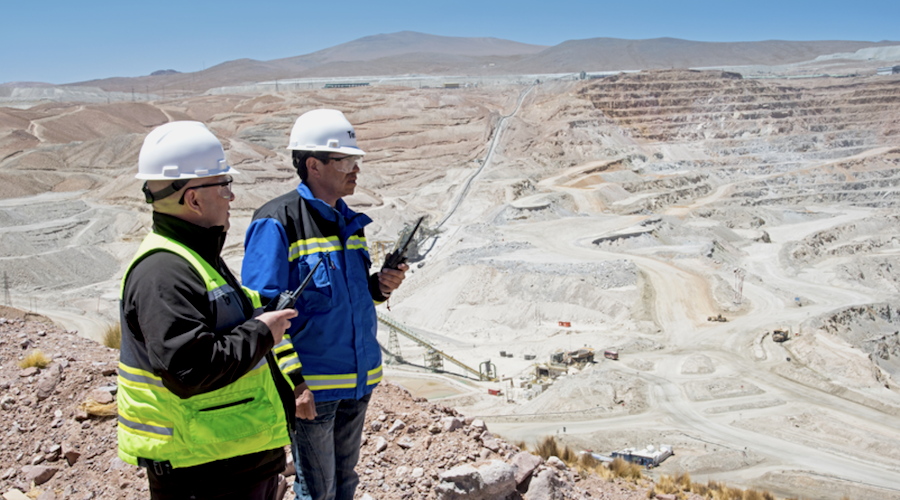Fine grinding and some new silver extraction ideas

International Mining’s May issue includes a major article on mineral processing advances. Sadly some of this article had to be cut because of space constraints. The first to hit the editing room floor was a section on fine grinding.
Platinum Mile, a South African tailings treatment company recently awarded a contract to Deswik Mining Consultants for the provision of two Deswik 2000s for its operation in Rustenberg. The two fine grind vertical Deswik mills will operate on separate circuits with the mills producing 100 and 60 t/h (dry) from an ore feed of D-90 50-60μm to a product of D-90 25um. The two mills have been designed to operate at 6.5 and 11.2 kWh/t respectively.
Deswik’s scope of work on the project includes the manufacture, assembly, installation, commissioning and operational training of the Platinum Mile staff. It is planned that the Deswik mills will be installed and commissioned in July.
Deswik provides a complete design and construction service for its patented vertical fine grinding technology. This innovative technology can be used in concentrators and also as a solution for dump re-treatment projects. The Deswik mill is used to grind feed material to a specific particle size and distribution, ensuring improved performance of downstream metallurgical leach or flotation processes. It has proved to be a highly efficient machine for the reduction of metal bearing ores resulting in greater liberation of primary material from much higher froth flotation and leach recovery rates. The mill uses 50% less installed power than its competitors, and delivers up to 100% more throughput per cubic metre of mill capacity, the company claims.
It is a vertical stirred bead mill that offers a unique media/product separation system operating at high efficiency with simple operation and maintenance. Low noise operation, high degree of automation and data collection and compact footprint are other advantages. The Deswik mill can produce particle sizes from a D-50 of 200 μm down to 0.1 μm. This is achieved over a range of some 200 different products at energy consumption levels as low as 3 kWh/t.
New technologies in fine grinding offer substantial energy savings and AMIRA project P1003 seeks to provide the hard data which would enable companies to make decisions on which of these new technologies is most appropriate for them and what improvements they might expect.
A series of recent papers has described the greater energy efficiency of mills such as Xstrata’s IsaMill and the Stirred Mill Detritor compared with ball mills or even tower mills. The potential to capture and extend these savings would appear to be significant. Accordingly, P1003 will explore:
■ Impact of fine grinding with non-reactive media on flotation chemistry
■ Enhanced liberation resulting from finer particle size distribution (PSD)
■ Use of IsaMill and SMD for coarser tertiary grinding, with coarser F80 feed PSD
■ Benefits of the fine grinding narrower product PSD.
Surface preparation of particles plays a key role in fine and coarse particle recovery and enhanced selectivity. New IsaMill and SMD grinding technology has advanced mechanical surface cleaning of minerals to relatively coarse particle size applications.
Also, opportunities exist to improve liberation of cleaner feed without harmful chemistry (achieving better than traditional grades that improve smelting throughput) and to reduce primary grinding on high tonnage streams and do more regrinding on rougher and scavenger concentrates. These would achieve lower overall energy consumption by inert regrinding.
This will be a collaborative project involving University of British Columbia, McGill University and the Ian Wark Research Institute of University of South Australia. It is proposed that it be jointly funded by two supplier sponsors, six generic sponsors and two case study sponsors. Expressions of interest are now being sought. (Contact:
Bruce.Fraser@amira.com.au)
This would be a three year project. It is proposed that case study sponsors each contribute A$190,000 a year and generic sponsors A$95,000 a year. Supplier sponsors would each contribute A$56,000 a year.
And exemplifying energy efficiency in conventional milling, Mount Hope’s new molybdenum mine in central Nevada, USA, will be equipped with most energy-efficient gearless mill drive and dual pinion ball mill drive systems. ABB has been awarded a contract valued at over $13 million from General Moly.
The order includes the delivery of drive systems for General Moly’s pure molybdenum development project at Mount Hope. This is one of the world’s largest and highest grade undeveloped molybdenum projects (see International Mining Project News, March 14).
ABB’s scope of supply includes a 13 MW gearless mill drive system for an 11 m SAG mill, consisting of cycloconverter transformers, excitation transformers, Ehouse containing a cycloconverter drive with AC800 PEC control, motor control centre and video monitoring system as well as harmonic filter study. A second portion will comprise two units of ACS6000 dual pinion low speed ball mill drive systems including ACS6000 multi drive converters, excitation transformers, converter transformers and low speed synchronous motors. Deliveries will be concluded by the end of September 2009.
Both, the SAG mill as well as the ball mill will be powered by gearless drive systems which allow the customer to benefit from low maintenance and running costs, due to less mechanical parts in the drive train. Also the gearless applications enable most energy efficient operation.
{{ commodity.name }}
{{ post.title }}
{{ post.date }}

Comments